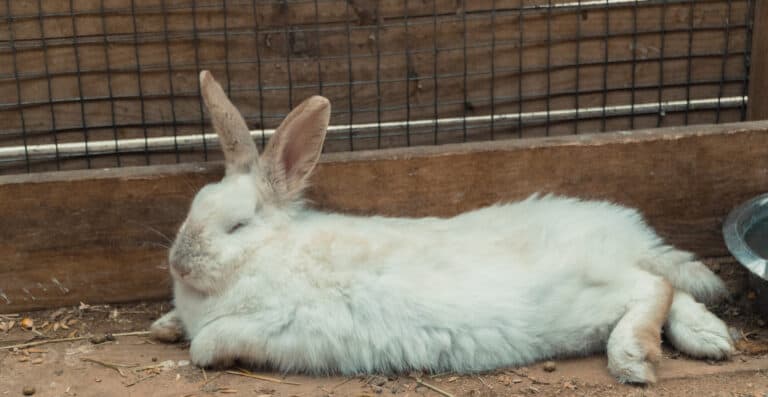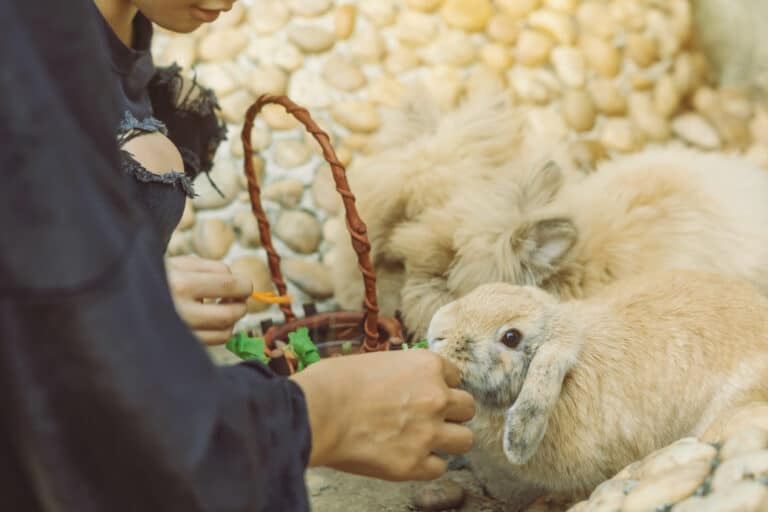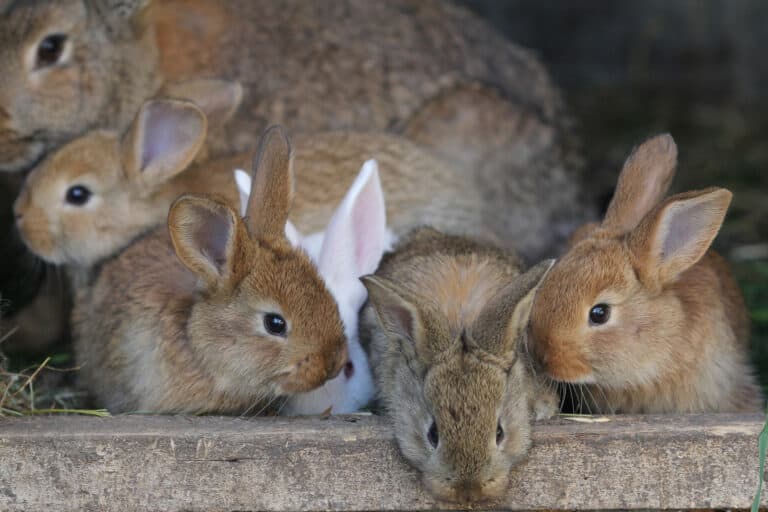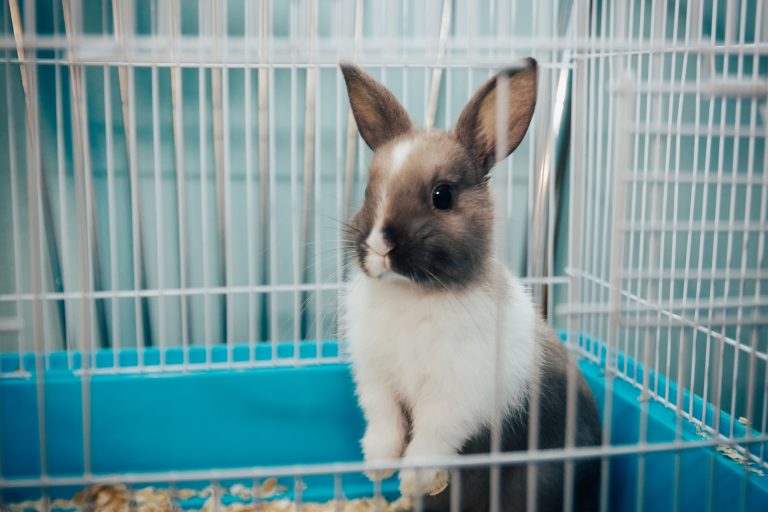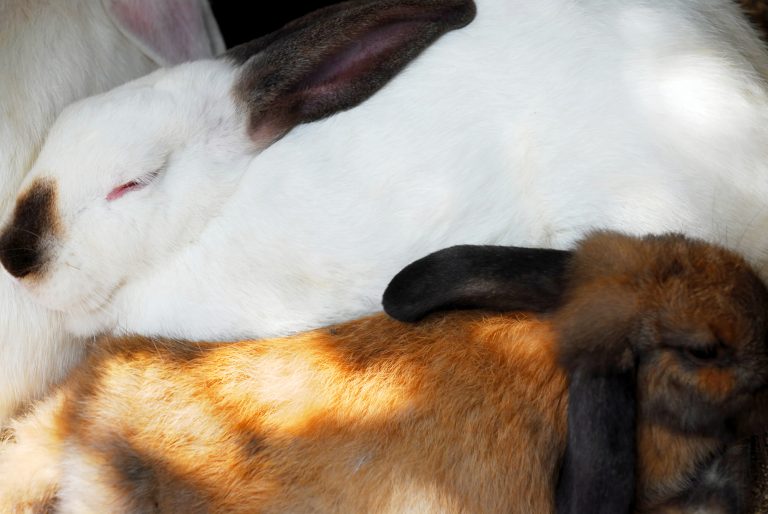How to Pet a Rabbit: The Do’s and Don’ts
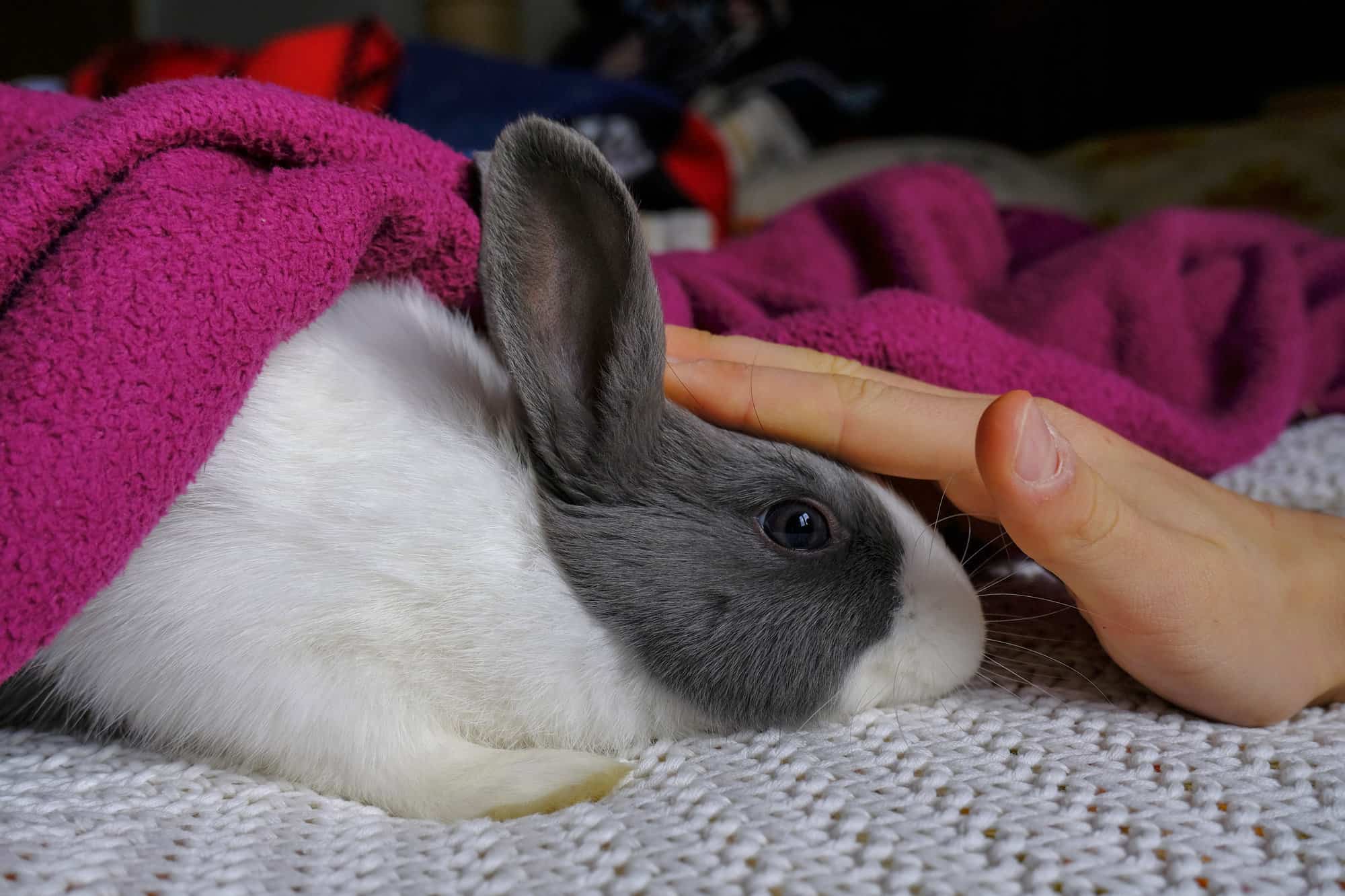
Rabbits, oh boy, they’re just irresistibly cute, aren’t they? If you’re a pet lover, chances are you find yourself instinctively reaching out to pet a bunny when you see one. But here’s the thing: rabbits are naturally skittish creatures and may not always appreciate human touch. So, how do you pet a rabbit without making him hop away in fright?
Do Rabbits Like to Be Petted?
Many rabbits love being petted. Just like humans, they enjoy gentle and soothing touches. If your pet has bonded with you, he’ll usually love the time you spend stroking his soft fur. In fact, you can use petting to calm a stressed or scared bun.
However, don’t expect all rabbits to enjoy being petted in the same way or for extended periods. Observe your fur baby’s reactions and body language to check if he’s still comfortable receiving your touch. If he tries to move away, give him space and respect his boundaries.
How to Pet a Rabbit?
There’s no one-size-fits-all option when it comes to petting rabbits. Like people, these charming creatures have unique preferences when it comes to receiving affection.
Whether you’re dealing with a shy rabbit or a bold and curious one, tailoring your touch to their needs is key. And if you happen to be petting an older bunny, a gentle hand is vital.
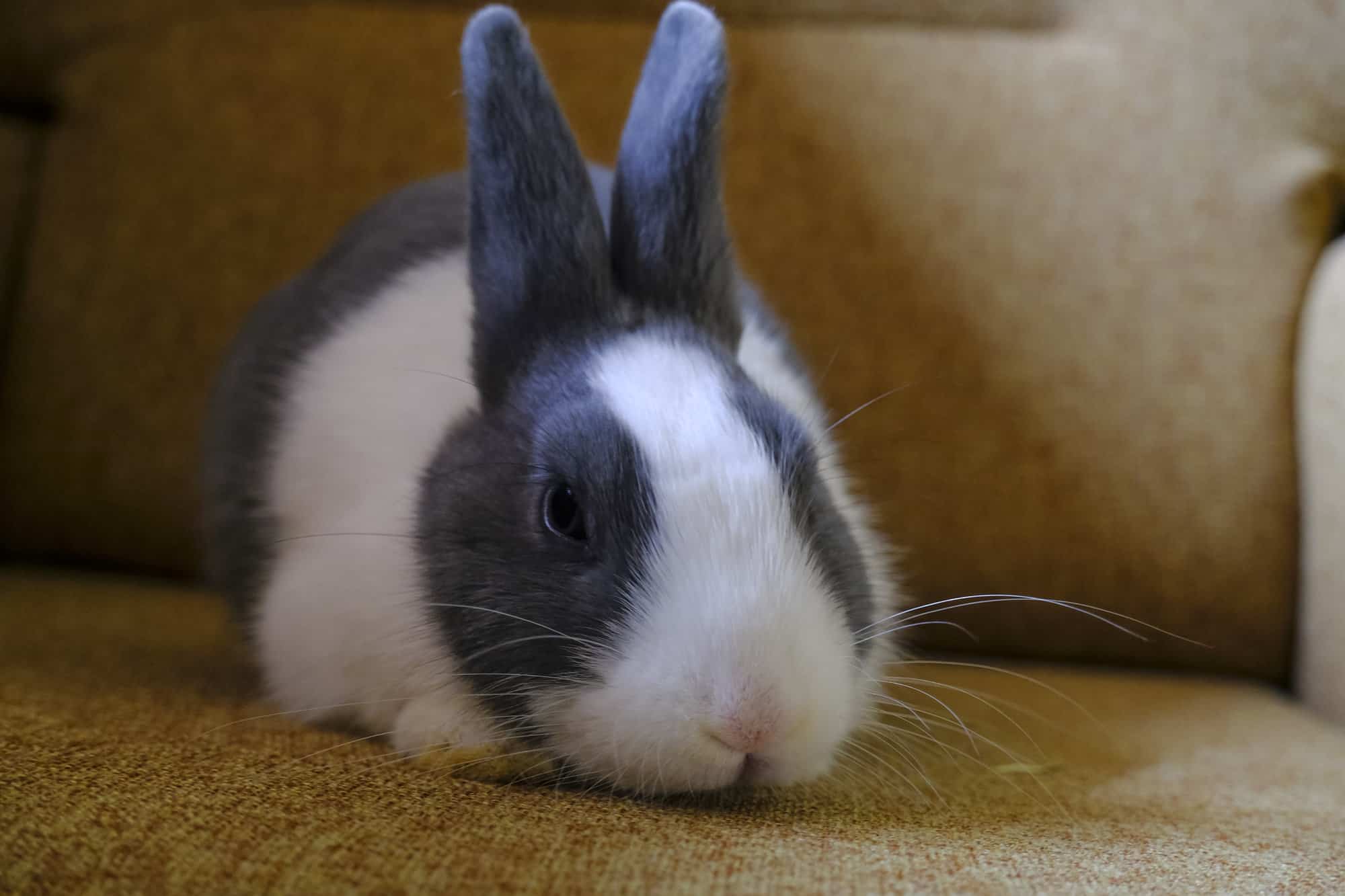
Where Do Rabbits Like to Be Pet?
Ask a bunch of rabbit owners where their buns like to be petted, and you’ll get a range of answers. Even fur parents with more than one rabbit will tell you that each of their pets prefers being petted in different places.
However, there are several bun sweet spots, and stroking your furball there will likely make him purr with satisfaction. Yes, like cats, rabbits sometimes purr when they’re happy and contented.
Popular sweet spots for touching include the forehead, ears, and cheeks. Many rabbits love being scratched behind their ears or having their cheeks rubbed softly. Strokes down the back can also feel good for most bunnies.
Places to Avoid When Petting Rabbits
Most bunnies, particularly those who have bonded with their humans, won’t say no to a cuddling session. We did say rabbits find petting enjoyable and can relieve their stress. That’s if their owners do it correctly and avoid areas where they are a bit sensitive.
Let’s see where your hand shouldn’t stray while stroking your bunny. If you somehow make the mistake of touching your pet in these areas, don’t be surprised if he struggles or tries to jump down from your lap.
- Chin: Dogs and cats often love chin rubs. Not so with bunnies. It’s likely because they hate having hands hovering directly in front of their face where they have a blind spot.
- Buttocks: Rabbits have a highly sensitive area around their hindquarters, right around the tail. On top of that, the site is also in a bun’s blind spot, so touching your pet there could startle him because he won’t see it coming.
- Chest and belly: Most animals will defend the most vulnerable spots in their bodies. For rabbits, those happened to be their chest and belly. So don’t be surprised if your bun growls, kicks, or even bites if you try to stroke those spots.
- Feet: Their feet are their primary mode of transportation and escape, so rabbits often hate someone messing with their thumpers. Your bun will usually run away if you try to touch the paws of his hind legs.
General Tips
Knowing how to stroke your fur baby can go a long way in making him feel safe and happy. Here are four tips:
1. Make Sure Your Furball Is in a Secure Position and Location
You can usually tell if your bun is calm and content. Maybe he’s chilling in his favorite spot or lying in a loaf position. That’s the perfect time to give him some gentle pats and scratches. It’s all about creating a comfortable environment and maintaining a happy and relaxed bond between you and your fluffy buddy.
If he seems jumpy or restless, it might be best to hold off on petting and give him some space.
2. Approach Slowly and Let Your Pet Know You’re Coming
Rabbits are naturally skittish due to their status as prey animals. That’s why they won’t appreciate you sneaking up on them. Approaching slowly means taking calm, measured steps with no sudden or jerky movements.
As you approach, you can also let your pet know you’re there by talking to him softly and soothingly or making kissing noises.
3. Be Gentle
Rabbits have soft and delicate bodies. For a small bun breed, the pressure of your finger could be too much if you press too hard. Use your fingertips and stroke your fur baby in the direction his fur naturally grows.
4. Pay Attention to Your Rabbit’s Body Language
Rabbits communicate through their body language, so pay attention to their cues. If they’re relaxed, they may nudge you for more petting or even start grooming themselves in your presence. However, if they tense up, thump their hind legs, or try to hide, it’s a sign they need some alone time.

How to Pet a Shy Rabbit
Remember that each rabbit is unique, so what works for one bun might not have excellent results with another. For example, shy rabbits need a different touch than their friendlier or more adventurous counterparts.
Let’s talk about how to make a shy rabbit enjoy being petted.
- Take your bun to a quiet room: Don’t let other pets in, and if you have kids, tell them to keep their distance for a while. Rabbits get spooked easily; sudden noises or movements can make a shy bunny scoot away from your touch.
- Bring a treat: It can be a piece of strawberry, apple, or any food your furball loves. If your bunny comes to you and takes the treat, let him nibble it from your hand.
- Resist the temptation to pet your bunny: Don’t try to pet your rabbit just yet. Instead, let him sniff you and get used to your smell. This lets him know you’re not a threat.
- Do this every day: Your bun will get used to your presence in time. If you see he’s pretty comfortable being with you, try giving him a gentle scratch on the forehead. Some rabbits might run away the first few times. Be patient and repeat the entire process until your furball starts to enjoy being petted.
How to Pet a Rabbit Who Bites
Rabbits who bite aren’t necessarily mean, nor do they set out to hurt you. They bite for several reasons, one of which is fear. It’s much harder to get a bun who bites to enjoy being stroked or cuddled, but it can happen.
You can try the tips we mentioned on how to pet a shy bunny but approach your rabbit with more caution. You’ll also need tons of patience as you’ll have to spend plenty of time sitting near your bun’s cage, talking softly and soothingly to him.
A trip to the vet can help rule out health issues causing your pet to bite.
How to Pet an Older Rabbit
Depending on the breed, rabbits live up to around 10-12 years. They’re generally considered elderly when they reach 6-8 years old. Like humans, rabbits also experience physical changes as they age.
Older rabbits may have limited mobility or joint pain, so be extra gentle in handling a senior bunny. Keep your strokes gentle and use slow, smooth movements, as older rabbits may have delicate skin.
Provide support if your aging bun has difficulty maintaining a particular position. A soft cushion or towel can make him more comfortable and help alleviate joint pain while petting or cuddling him.
When petting a bun, remember that rabbits have preferences, too. Some might enjoy a good ear rub, while others may prefer gentle pats along their sides. Discovering what your bunny likes through trial and error is part of the fun.
More on Rabbit Care
- How Long Do Flemish Rabbits Live: Giant Breed Facts
- Complete Guide to the Best Hay For Rabbits: Reviews & More
- Are Rabbits Rodents? Find Out More About These Small Mammals
- Is Oat Hay Good for Rabbits? Complete Guide to the Best Hay
- Why Do Rabbits Lick You? 11 Reasons for This Common Behavior
We hope you enjoyed this post! If you did, will you give it a share or two 🙂 Thank you! ~from Every Bunny Welcome


